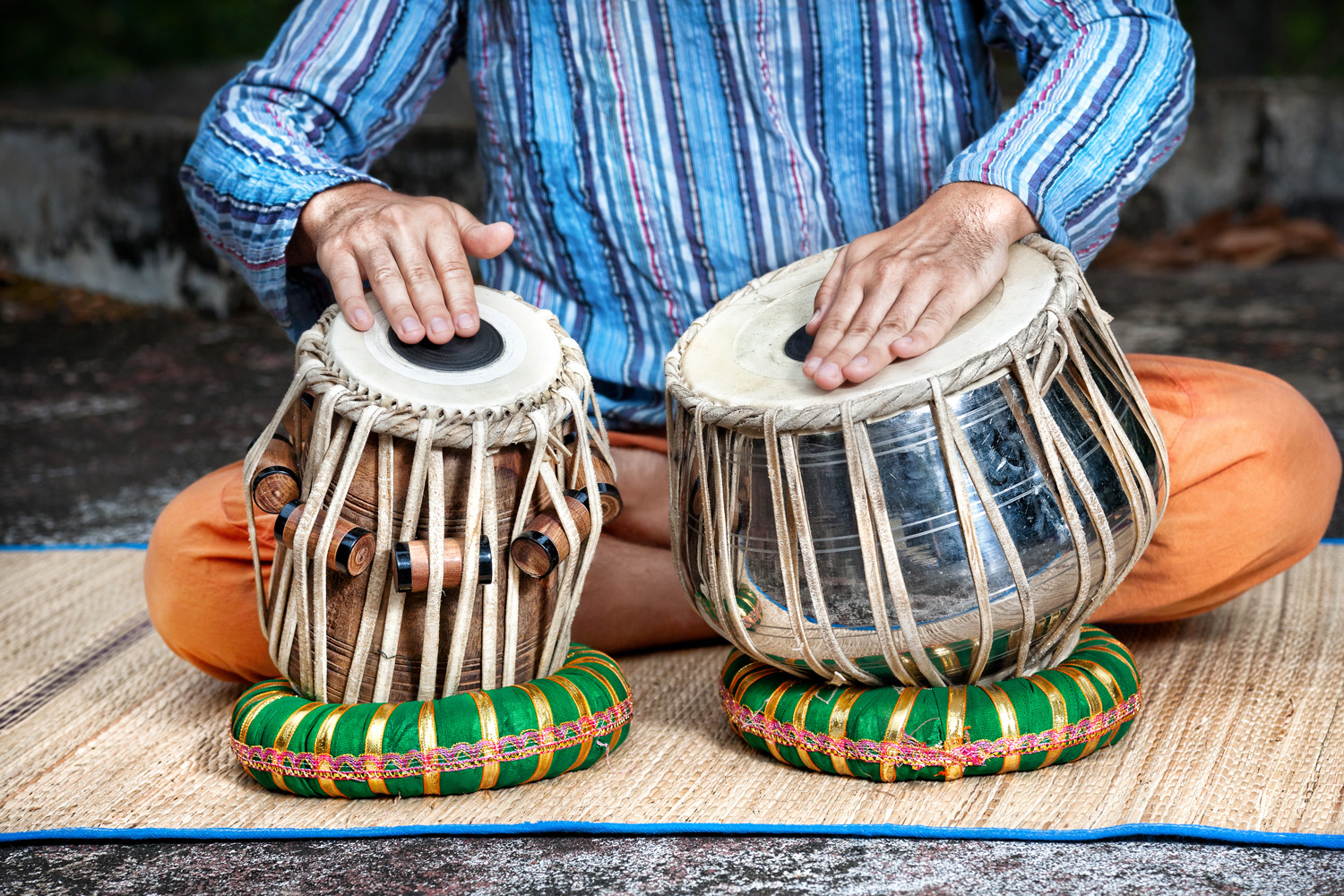Bhangra is a lively, rhythmic form of dance music that originated in the state of Punjab in India and in the Pakistani province of Punjab. It is the traditional folk dance music of the rural communities, especially the Sikhs of Indian Punjab, and has played an important role in Indian Punjabi life and society. It also forms the basis of a type of pop music enjoyed by young men and women of Asian descent living in the United Kingdom (UK). In this form, it has become popular in other countries, especially in North America.
Traditional bhangra
is a joyous kind of music originally associated with the annual Punjabi harvest festival known as Baisakhi. Today all forms of celebration, especially weddings, furnish a reason to perform bhangra. Bands of bhangra musicians and singers also provide entertainment and music for dancing at parties. Traditional bhangra is performed to the accompaniment of the dhol, a medium-sized double-headed drum worn around the neck and beaten with curved sticks, and includes the singing of verses or couplets called boliyan. The high-spirited music has a lilting, syncopated rhythm.
The term bhangra is often used to describe three types of folk dances: (1) bhangra proper, a dance performed by men and centered on the use of the dhol, and sometimes including the use of sticks or other props and also acrobatic moves; (2) giddha, a form of the dance performed by women and centered on the boliyan; and (3) jhummer, a variation of bhangra proper that includes women as well as men.
Modern bhangra.
In the 1970’s, Punjabi musicians introduced a variation on traditional bhangra music into the United Kingdom, and it rapidly developed into a favorite form of modern dance and pop music among the children and grandchildren of Asian immigrants. In modern bhangra, the traditional rhythms were adapted to suit a combination of modern western instruments, such as electric guitars and electronic keyboards. The traditional instruments, including the dhol and tabla (pair of drums) provided the unique bhangra sounds. Properly staged bhangra pop concerts and shows became part of the music scene. Bhangra groups, including Heera, Alaap, and Chirag Pechan, soon became immensely popular among young Asians in the United Kingdom.

Modern bhangra sparked a revival of interest in traditional bhangra music among young people. But its appeal became much broader than that of traditional bhangra. It attracted not only people of Punjabi origin but also people descended from other ethnic groups of India and Pakistan. It also gave Asians a kind of pop music of their own.
Since the 1980’s, the popularity of modern bhangra has spread beyond the United Kingdom. In particular, it has caught the attention of Asian immigrant communities in the United States and Canada. But the United Kingdom continues to lead the world in the excellent quality of its bhangra groups. Nearly all the top groups come from Birmingham and the English Midlands. Most of the groups active in the United Kingdom consist entirely of men. But there are some top groups containing women. They include Najma Ahktar, Sabeena, and Sangeeta. Although groups dominate the bhangra music scene, many solo artists also have emerged. The best-known stars include Apache Indian, Bally Sagoo, and Johnny Zee. Bhangra musicians and performers record a large number of albums and singles. But bhangra recordings are inexpensive and make little profit for the performers. The performers rely instead on the publicity from the albums to generate work in the form of bookings for weddings and live shows.
Modern bhangra is firmly linked to its traditional folk roots, but it is changing. Each new generation of bhangra musicians seeks to experiment. For example, some performers have combined rap and reggae and Western rock music techniques with the basic bhangra sound. Although modern bhangra has become more like Western pop music, it has not lost its unique, light-hearted freshness.
